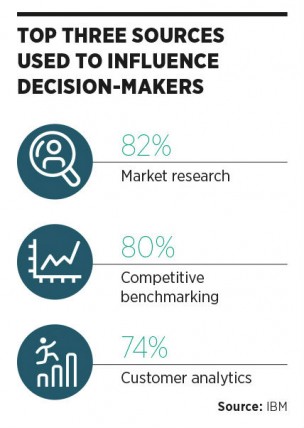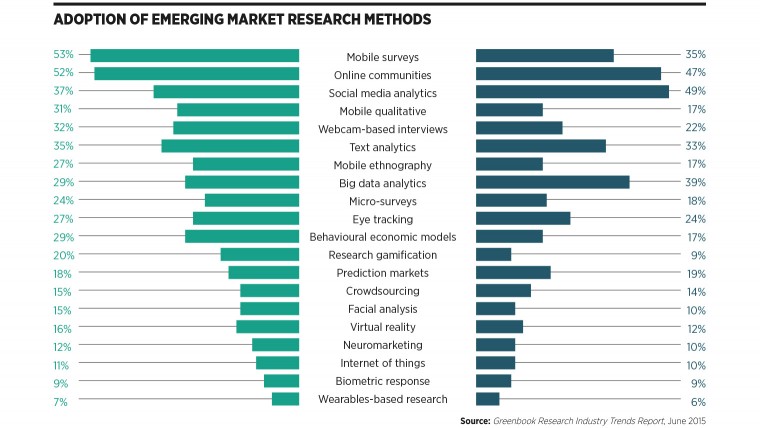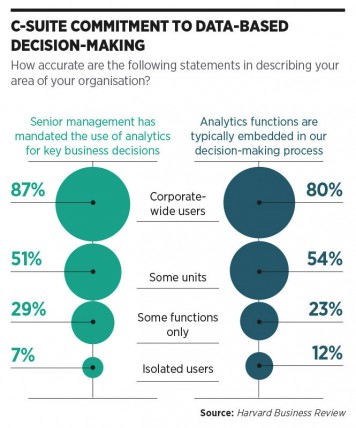Market research is different to how it once was. Before digital technologies came racing over the horizon clients who commissioned researchers were paying for leg work as much as insight. Essentially they were forking out for teams of temps with clipboards to throw questions at shoppers as they exited Woolworths.
Because the work was arduous and drawn out – researchers had to battle inclement conditions as well as inclement members of the public – just extracting a defined number of responses was seen as a win. Clients were happy that 500 people had given their views on lawnmowers or TV shows or jam.
But in 2015, getting the views of 500 people on just about any topic is really cheap and very easy. Meanwhile the raw information you extract is likely to be more accurate because it is given online or on the phone (probably in return for a small bribe) and not thrown back over someone’s shoulder as they head for a car park.
So market researchers have had to upgrade what they do. If it’s no longer good enough to parcel together a few megabytes of unstructured data, put a binder around it and post it to a client, then what represents a job well done?
To answer this question most have shifted their focus from data gathering (easy) to data analysis (hard). They know that communicating lessons and explaining how customers can act on data is much more useful than the specifics of the data itself.
Actionable insight, therefore, is all the rage. It is down to research teams to excavate details from the mess of views they generate and string them out into an elegant and comprehensible story for their clients to gobble up.
Data in itself is meaningless – it’s the analysis and insight, through the storytelling, that provides real value
In this lean era, businesses don’t just want to find things out, they want to understand how those things can put 10 per cent on the bottom line, make their customers write glowing reviews on social media or create some other beneficial outcome that represents a return on investment.
Businesses don’t want to wade through big data, they want to skim over a manual with clear instructions on how to improve things step by step. It’s up to market research firms to tell them how to connect the dots based on what they have discovered.
Alistair Millen, strategy director of Critical Mass, says: “Digital tools have revolutionised the market research industry. At one end of the spectrum, online outfits such as Survey Monkey have made it quicker and easier to gather a set of stock responses cheaply and efficiently.
“But it has also put a real premium on information at the other end of the spectrum; the deep and meaningful insight into things like customer experience that you won’t get from a simple survey. Data in itself is meaningless – it’s the analysis and insight, through the storytelling, that provides real value.”
[embed_related]
Millward Brown’s head of UK marketing Amanda Phillips argues that storytelling skills are in demand because they can bring colour and insight that motivates teams to act in a way which benefits the business.
“Internally within organisations, storytelling has become a tool used to engage key stakeholders about the evidence presented by the data,” she says. “We know through our own neuroscience solutions that storytelling is a creative tool which evokes stronger enjoyment and engagement and which motivates people.
“As with many industries, time is precious, and insights functions need to be able to get their hands on concise summaries of complex, multi-country research studies and practical, actionable insights which they can use to brief marketing and advertising, product development or sales teams. The days of the 150-slide decks are long gone.”
[infographic]
Some agencies are taking storytelling theory to its logical conclusion by placing clients into the narrative. Researchers at Sense Worldwide say they do “a lot less asking and a lot more observing”, using behavioural economics to pull out meaningful information. The team brings clients along for the ride, setting up controlled environments so they can put themselves in a customer’s shoes.
Brian Millar, Sense Worldwide’s head of strategy, explains: “There’s little point in asking somebody why they bought a Duracell versus Energiser battery. They don’t know. Our unconscious brain makes those decisions for us. When you ask people, you get the rational brain, trying to make sense of a decision it had no part in.
“So we now strap GoPros [camcorders] to people and observe them for four hours at a time, doing housework, cooking, shopping and exercising. We also use motion-sensitive cameras in homes; it gives us deep insights into the unconscious behaviour of consumers.
“Experience is king. Recently we built empathy for elderly consumers within a technology company by setting up a house in San Francisco and fitting them with suits that restricted movement, hearing and eyesight so they’d understand the limitations of their customers. It was enlightening and also extremely emotional.”
Other market researchers are bringing new levels of clarity through media, including infographics and video vox pops, the kind of vehicles that can convey a thousand words at a glance.
Opinium Research, one such shop, also places particular emphasis on the very beginning of the process by accurately translating the business need into survey questions. It’s a process without which achieving return on investment becomes much harder.
The old adage “garbage in, garbage out” applies in this field and client businesses must be sure their research agencies are asking the right questions to extract answers they can confidently act upon.
“A researcher must translate their client’s complex key business needs into a short questionnaire that is easily understood by thousands of respondents from a variety of backgrounds,” says Opinium’s managing director James Endersby. “Once fieldwork is complete, the analysis starts.
“We use all sorts of techniques to bring the findings to life. From infographics and cleverly designed presentations where the story jumps out and is easily picked up, to video and vox pops where we bring the voice of the consumer into the boardroom.”
Manoj Madhusudanan, managing director of InsightBee, argues that market research is really just problem-solving with the help of data. If the research doesn’t address the client’s burning issues then what really is it good for?
The trick, he says, is to learn the pain points of a business so researchers can concentrate on the vitally important solutions without getting distracted by information that has little or no value.
“The key is to focus on problem-solving,” he says. “The client has a particular problem to solve and research is an enabler, not an end in itself. If we keep this in mind and structure the problem carefully into its sub-parts, we can start to look for specific answers.
“Then it becomes easy to weave it all together and build the story in such a way that it addresses the problem at the top level. As part of that process, unimportant details that do not help solve the client’s problem are automatically omitted.
“The issue with many researchers is they do not pay attention to structuring the problem at hand and try to deliver everything they find on the way. That doesn’t really help the client get useful insights.”





